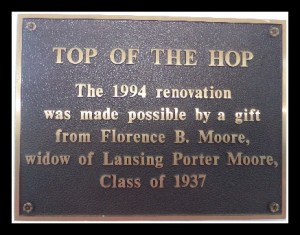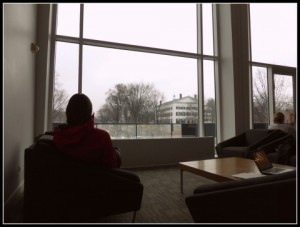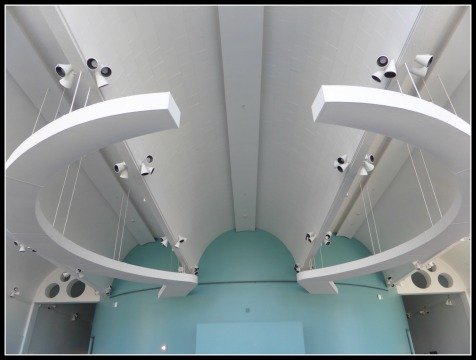
The Top of the Hop, an undefined space
The Hopkins Arts Center, located on the campus of Dartmouth College in Hanover, NH is locus of the fine arts in the North East. In addition to bringing a wide range of artists to its stage, the Hopkins Center houses spaces important to student life, such as the campus mailroom, several classrooms, study spots, and a popular Grille. The Top of the Hop (TotH), is the uppermost level of this building, hence its name. At night the wide room is converted into a reception hall, yet during the day the purpose of this space is ambiguous. While often utilized as a study location by students, the unspecified design of TotH accommodates many different activities ranging from quick siestas to impromptu musical performances.
Publicity as an analytical lens
In the Top of the Hop the distinction between private and public space blurs. As described by David Fleming in his piece, The Space of Argumentation a public space is one which “generates casual contact” (pg.153). This is true of the Top of the Hop, where although students of all years are brought together there is nothing which forces the users of this space to engage directly with one another. Students merely being occupants of the same room creates a high level of publicity and ‘casual contact’. At the same time, only having indirect or inadvertent interaction between users, in addition to its relatively set apart location from the rest of campus, makes TotH a relatively private space.
Limits on the senses define a space
These notions of publicity and privacy are crafted by the physical features of the room, or more precisely: the influence of physical features on ones’ senses. When applied to visual and auditory inputs, these design concepts are referred to as ‘lines of sight’ and ‘lines of sound’, respectively. Line of sight is the extent of what one can see from a certain location. Similarly, line of sound is the extent of what one can hear. While seemingly trivial details, the limits on a persons’ senses while in a space significantly craft their experience.

Physical form molds behavior
As argued by Fleming, the behavior of individuals is often shaped by the form and characteristics of the places they occupy. The social code of conduct in public spaces is the best evidence of this. In public, ownership of word and deed is inescapable; unlike in the private sphere, one is ‘held accountable’ to an audience (real or imagined). This site explores how the features of Top of the Hop, including lines of sight and sound, make it simultaneously a secluded yet highly public place, and in turn, how these characteristic influence the behavior and actions of those who use it.
